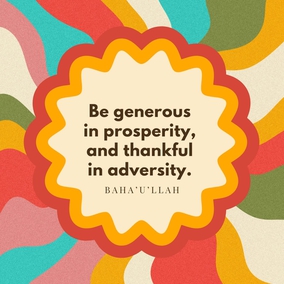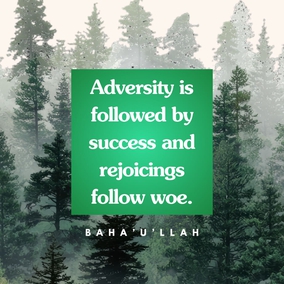The views expressed in our content reflect individual perspectives and do not represent the authoritative views of the Baha'i Faith.
O people! The Tree of Life hath verily been planted in the heart of the heavenly paradise and bestoweth life in every direction. How can ye fail to perceive and recognize it? – Baha’u’llah, Gems of Divine Mysteries, p. 52.
The beautiful metaphor of the Tree of Life can help us better understand aspects of spiritual reality: the call of God to humanity, our recognition of the truth, and the heavenly fire of divine love. I’d like to suggest, however, that these aren’t only metaphors—but instead may help us experience our own attunement to the unseen realities of life.
In a poetic prayer written to an early Baha’i named Ahmad, Baha’u’llah tells us about the Tree of Eternity. From its twigs the nightingale of paradise sings sweet melodies, proclaims glad tidings, calls, informs, and guides the mystic lovers to him. Baha’u’llah uses this symbol to describe his station as a messenger of God. He is the Tree of Life–and he is also the nightingale uttering the call.
In the prayer the people wander around lost, without the ability to see God with their own eyes, or hear his melody with their own ears. Their superstitions have come between them and their own hearts. The prayer invites us to move beyond those superstitions, remember our Creator, and to respond to the Nightingale’s call.
The symbol of the living tree stands for our response to that life-giving truth:
We must adore the sun itself and not merely the place of its appearance. In the same way men of enlightened heart worship truth on whatever horizon it appears. They are not bound by personality, but they follow the truth, and are able to recognize it no matter from whence it may come. It is this same truth which helps humanity to progress, which gives life to all created beings, for it is the Tree of Life! – Abdu’l-Baha, Paris Talks, p. 128.
 We often associate the symbols of fire and light with prayer, because they stand for the yearning of our hearts after God, and the searing pain of our separation from him. Fire and light cleanse the heart from attachments of the self. God gives humanity the whole of creation–except the human heart.
We often associate the symbols of fire and light with prayer, because they stand for the yearning of our hearts after God, and the searing pain of our separation from him. Fire and light cleanse the heart from attachments of the self. God gives humanity the whole of creation–except the human heart.
Our heart is meant for God alone, yet it will attach itself to wherever we direct our energies. If we love the material world, our heart will attach to it–yet the fire of spiritual love and yearning will continue to burn. This fire will burn away all things until we attain the presence of God. The Baha’i teachings tell us the heart cannot find contentment until cleansed and turned towards God. Abdul-Baha promises that by attuning our heart to the divine, infinite love we will discover the secrets of the universe and attain powers greater than those already discovered by science. By the fiery heat and light of this love every heart can be illumined, attain knowledge and understanding, and seek reunion with its Creator:
O God my God! Praise be unto Thee for kindling the fire of divine love in the Holy Tree on the summit of the loftiest mount: that Tree which is “neither of the East nor of the West,” that fire which blazed out till the flame of it soared upward to the Concourse on high, and from it those realities caught the light of guidance, and cried out: “Verily have we perceived a fire on the slope of Mount Sinai.
O God, my God! Increase Thou this fire, as day followeth day, till the blast of it setteth in motion all the earth. O Thou, my Lord! Kindle the light of Thy love in every heart, breathe into men’s souls the spirit of Thy knowledge, gladden their breasts with the verses of Thy oneness. Call Thou to life those who dwell in their tombs, warn Thou the prideful, make happiness worldwide, send down Thy crystal waters, and in the assemblage of manifest splendors, pass round that cup which is “tempered at the camphor fountain.
Verily, art Thou the Giving, the Forgiving, the Ever-Bestowing. Verily, art Thou the Merciful. – Abdu’l-Baha, Selections from the Writings of Abdu’l-Baha, p. 254.
















Comments
Sign in or create an account
Continue with Googleor